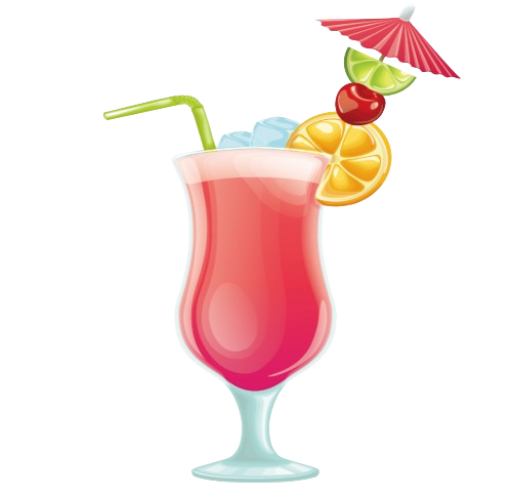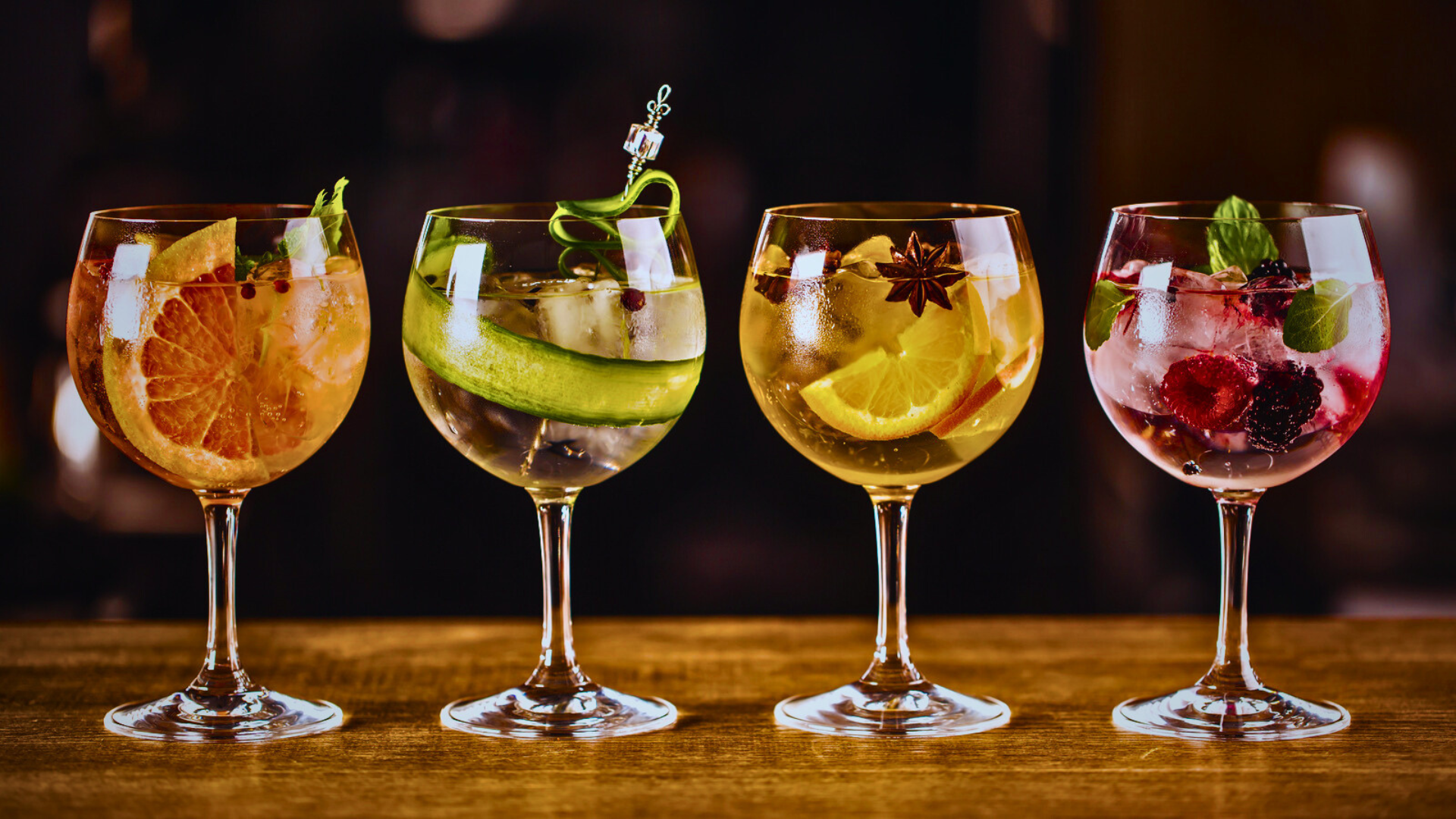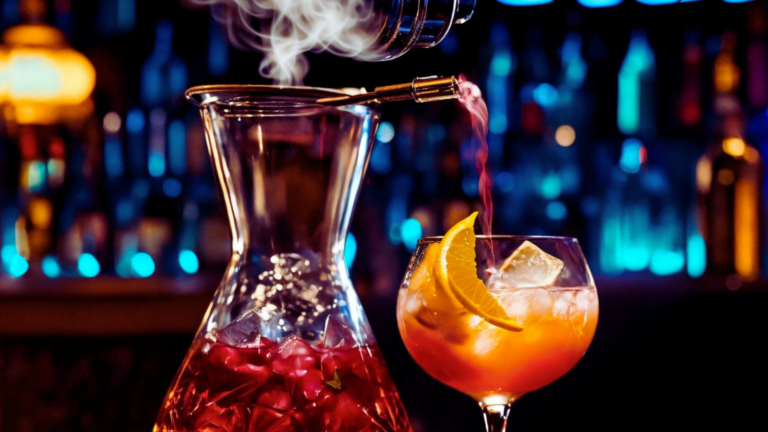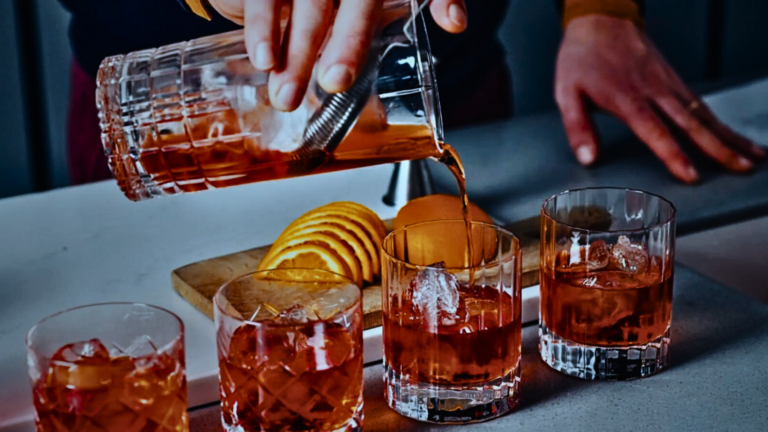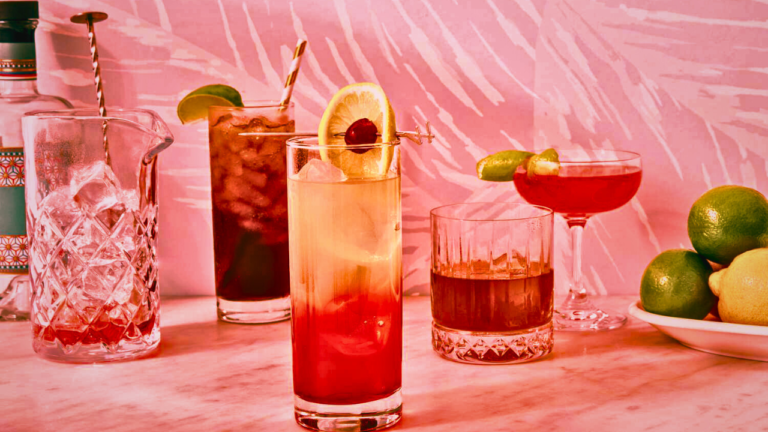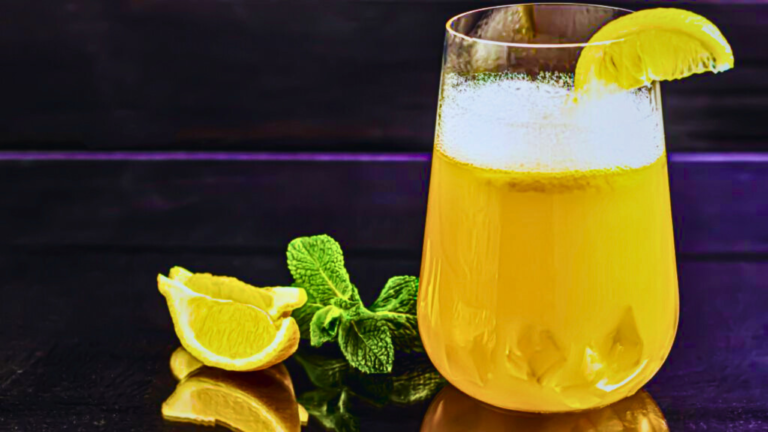What Cocktail Has The Most Ingredients?
Are you ready for a splash of adventure in your glass? The world of mixology can be as simple or complex as your taste buds desire. But have you ever wondered what cocktail packs the most ingredients? Well, buckle up because we’re going on a flavorful journey to explore the cocktail crowned as the king of complexity!
A Cocktail of Epic Proportions
Imagine a drink that is so layered and nuanced that it defies the conventional definition of a cocktail. We’re not talking about a simple Martini or even a fancy Long Island Iced Tea. We’re referring to a cocktail that has proven to be a true test for even the most experienced of bartenders, a challenge not just in preparation but in balance of taste, aroma, and presentation.
“The measure of a good cocktail is not just the sum of its parts, but how well these parts play together. The more ingredients you have, the harder it is to achieve that harmony.” – Anonymous Mixologist
A multitude of ingredients might evoke chaotic imagery, but in the right hands, it can create an ensemble that sings at each and every sip!
Read also: What Are The 5 Most Popular Cocktails?
What is the definition of a cocktail?
At its essence, a cocktail is a mixed drink. Typically, it involves one or more types of liquor combined with other ingredients such as fruit juices, cream, honey, herbs, and bitters. What makes a cocktail an intriguing concoction is not just the mixture of flavors but also the art and science involved in blending these elements.
The term “cocktail” itself embodies the spirit of innovation and experimentation. It was first defined in an 1806 issue of The Balance and Columbian Repository as “a stimulating liquor, composed of spirits of any kind, sugar, water, and bitters.”
Over the centuries, the definition has broadened to include a plethora of combinations—with or without alcohol, garnished or unadorned, shaken or stirred. But even as we expand categories and push boundaries, a cocktail retains its core purpose: to delight us with its intriguing array of flavors and, often, its cryptic mixing technique.
Thus, deciphering ‘what a cocktail is’ can be as complex and varied as the drinks themselves. Here are a few standard formats under which most cocktails fall:
- Spirit-forward: These drinks lead with their liquor, with high-proof spirits like whiskey, gin, or rum taking center stage. An old-fashioned or a dry Martini are prime examples.
- Fruit-forward: These drinks use fresh fruit juices or muddled fruit to provide the main flavor profile. Think of a daiquiri or a margarita.
- Highball: These are characteristically served in a tall glass and contain a larger proportion of a non-alcoholic mixer. Classic Highball or Gin and Tonic are the crowd favorites.
In the end, no matter what the cocktail recipe or ingredients involved, the objective remains the same: creating a harmonious and exciting mix that invigorates the senses and instills a sense of joy in every sip.
Read also: How Do You Add Dry Ice To A Cocktail?
What are some of the most complex cocktails known?
When it comes to crafting concoctions, some mixologists truly push the envelope. They create masterpieces that go beyond the standard shake, strain, and pour. These elixirs, often known for their unique blends, stand in a league of their own because of their complex compositions. Ready to add some sophistication to your cocktail experience? Let’s dive in!
The Widow’s Kiss
Engulfed in mystery and aged allure, the Widow’s Kiss is a cocktail not for the faint-hearted. It includes Calvados (Apple Brandy), Yellow Chartreuse, Benedictine, and Angostura Bitters. Using sweet liqueurs like yellow chartreuse and Benedictine adds depth and complexity, complementing the tartness of the apple brandy. Each ingredient brings a distinct flavor or aroma to ensure a unique tasting experience.
The old-fashioned
Don’t be fooled by its simplicity; the Old Fashioned is one of the most complex cocktails around. Made with Bourbon or Rye Whiskey, sugar, water, and bitters, the Old Fashioned is a timeless classic. Each layer unfurls on the tongue, offering a banquet of flavors from sweet and smokey to slightly spicy.
The Sazerac
An emblem of New Orleans’ vibrant cocktail scene, the complexity of the Sazerac lies in its preparation rather than its ingredient list. It carries Rye Whiskey, Absinthe, Sugar Cubes, Peychaud’s Bitters, and a Lemon Peel for garnish. It’s a cocktail that requires precision, skill, and patience to perfect.
The Martini
A household name, the Martini, is no less complex for its fame. Made from gin, dry vermouth, and lemon twist or an olive for garnish, it seems simple on the surface. But beneath lies a world of flavors, from the botanicals in the gin to the fortified wine undertones of the vermouth.
So whether it’s intricate combinations or more in-depth processes, these cocktails stand as testament to the art of mixology and its potential for complexity. Each sip carries a narrative, layered with notes of numerous ingredients, much like the most beautiful symphonies are built on countless tones and harmonies.
How are cocktail ingredients categorized?

In the vast and vibrant world of cocktails, categorizing ingredients can feel like a colossal task. Setting the glass aside, let’s dive into an exploratory journey to understand how cocktail ingredients are grouped together.
The most straightforward method to classify cocktail components is based on purpose, with almost all ingredients falling into one of four categories:
- Base Spirits: This forms the basis of the cocktail, providing the primary flavor and the mighty punch. Think of spirits like vodka, rum, gin, tequila, whiskey, and more.
- Modifiers: These add complexity to the cocktail, subtly balancing or contrastingly juxtaposing the base spirit. Modifiers include vermouth, bitters, and liqueurs of various types.
- Accent Ingredients: Also known as the “highlight” ingredients, these include things like citrus juices, syrups, herbs, spices, and more. They add that twist to the drink and influence its final taste significantly.
- Garnishes: Beyond just dressing up your drink, garnishes can provide the finishing touches to a cocktail’s flavor and aroma. Typical garnishes encompass citrus peels, cherries, olives, and even cocktail onions.
Though this is not a uniform rule, these categories serve as a helpful starting point for understanding the role each ingredient plays in a cocktail. Breaking down and analyzing the incredibly diverse array of cocktail ingredients can make us appreciate the craft, creativity, and chemistry involved in mixology.
Note: Certain ingredients may fit into more than one category, depending on their use in a particular cocktail. For instance, citrus juice can serve as an accent in one drink while acting as a modifier in another.
What is the record for the most ingredients in a cocktail?
Here’s the fun fact you’ve been waiting for: the record for the cocktail with the most ingredients goes to a very ambitious mixologist from Italy. This is a record documented by none other than the Guinness Book of World Records, ensuring its validity and standard. Grab your seatbelt, because this is a wild ride from here.
In February 2014, a bartender named Luca D’Angelo created a cocktail containing a mind-boggling, record-smashing 735 distinct ingredients! This happened at Italy’s famous Fifties Café in July 2013.
It might be hard for you to imagine, but to give you an idea, the ingredients used ranged from different types of spirits, fruit juices, and syrups to diverse varieties of fresh fruit, herbs, spices, and even flavored sodas.
Wondering how long it took to make this cocktail? Titanically, it took a whopping 16 hours just to prepare. It’s not a cocktail for the casual Friday night, we say!
After meticulous mixing and careful balancing of flavors, Luca D’Angelo presented a gigantic cocktail, served in a specially designed glass container. And with that, he secured his place in the mixology history books. Now, that’s what we call raising the bar!
Though it’s fair to say that this record-breaking cocktail doesn’t represent the typical drink you’d order at a bar on a night out, the record nonetheless provides a fascinating glimpse into the limits of cocktail creation. And it shows you just how far some people are willing to go in the pursuit of an unusual and historic title!
Read also: Is Cranberry Cocktail Good?
What factors contribute to the complexity of a cocktail?
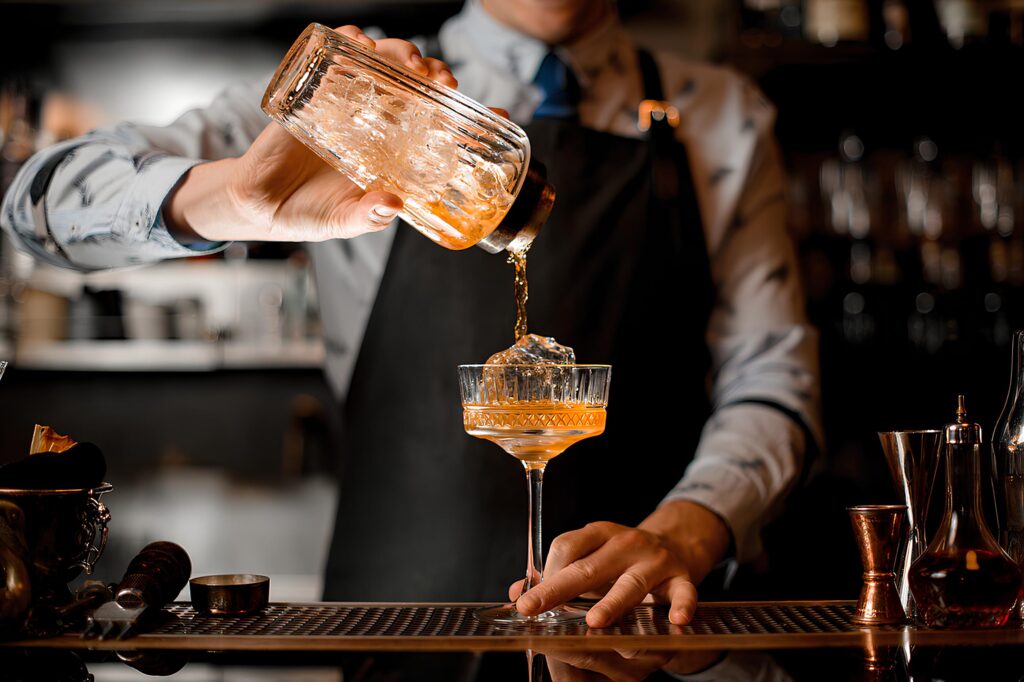
While the sheer number of ingredients is one aspect that can add complexity to a cocktail, there are several other factors to consider. An intricate cocktail is more than just about the quantity; it’s about the harmony of flavors, the technique used in its creation, the order in which the ingredients are combined, and even the texture and temperature it’s served at. As the popular saying goes, it’s not just what you do, but how you do it. Here, we’ll explore these aspects in detail.
- Balance of Flavors: One of the key factors is how well the flavors complement and contrast with each other. A well-crafted cocktail is a symphony of tastes, with sweet, sour, bitter, salty, and even umami elements in perfect harmony. Achieving this balance is an art that requires an understanding of the flavor profiles of each ingredient.
- Mixing Technique: Some cocktails require precise methods of mixing, such as stirring, shaking, or muddling. The way a drink is mixed not only affects the texture and temperature, but it can also highlight or subdue certain flavors. Additionally, some ingredients react differently to different mixing techniques. For instance, shaking a cocktail can aerate and invigorate the ingredients, bringing out fresh, vibrant flavors.
- Order of Ingredients: The sequence in which ingredients are added can significantly alter the final flavor profile. Some ingredients need to be added first to allow for proper dissolution or infusion, while others might be added last to float on top and provide a delightful finish.
- Presentation: A cocktail’s complexity can also come from its presentation. The garnish, glassware, and even the way the cocktail is layered can add to the cocktail’s intrigue. The right presentation can enhance the drink’s appeal and set up anticipation for a sensory treat.
In essence, creating a complex cocktail is akin to conducting an orchestra, where each ingredient plays its part and the bartender skillfully directs them to create a harmonious, delightful experience. An understanding of these factors can increase your appreciation for the art of cocktail-making and help you understand what makes a seemingly simple drink into an extraordinary symphony of flavors.
Conclusion
In sum, the world of cocktails presents an exciting mixology adventure. While numerous cocktails boast a long list of ingredients, the leading titleholder for the cocktail with the most components is the ‘Pshycholotea’. This dizzying mix includes a whopping 77 ingredients, setting it apart in the cocktail kingdom.
However, it’s not all about quantity when it comes to the sophistication of a cocktail. Quality, balance of flavors, and the skillset of the bartender all contribute to creating a complex and satisfying cocktail experience. Knowing this, you can now appreciate the artistry and finesse involved in crafting these libations even more!
Remember, the most rewarding cocktail experience lies not just in how many ingredients it has, but in how pleasurable it tastes. After all, it’s the harmony of flavors that truly makes a cocktail outstanding!
So, continue to explore this vast and tantalizing cocktail universe. Every cocktail, whether made with an extensive list of ingredients or a simple mix, holds a unique charm worthy of appreciation. Cheers to your next cocktail discovery!
FAQs
What are the most common ingredients used in cocktails?
Cocktails generally consist of at least one variety of spirit (like rum, vodka, or whiskey) and a mixer such as soda, fruit juice, or cream. They can also include sweeteners (like sugar cubes or simple syrup), citrus (like lemon or lime juice), and bitters.
Who holds the world record for the cocktail with the most ingredients?
The record for the most ingredients in a cocktail is held by bartender Salvatore Calabrese. He created the ‘Salvatore’s Legacy’—a cocktail comprising 71 different ingredients!
What factors make a cocktail more complex, besides the number of ingredients?
Other than the number of ingredients, a cocktail’s complexity can be attributed to the types of ingredients used, the method of preparation, the balance and contrast of flavors, and the presentation or garnish of the cocktail.
Can’t I just mix anything together to make a cocktail?
While you technically can, the art (and taste) of a cocktail is in its balance and flavor pairing. It’s not just about throwing together a lot of different ingredients!
How do the different ingredients influence the flavor of the cocktail?
Each ingredient in a cocktail contributes to its overall taste. Spirits lay the foundation, while mixers dilute the strength, bring flavor, and add volume. Sweeteners or citrus can further balance or enhance flavors. Lastly, the bitters, though used in small quantities, provide a complex array of flavors that add depth to the concoction.
What was the first cocktail ever made?
While it’s hard to say definitively, it’s widely accepted that the “Sazerac,” which originated in 19th-century New Orleans, might be the earliest reference to a cocktail as we know it.
Is it necessary to measure ingredients while making a cocktail?
Yes! Bartending is as much of a science as it is an art. Precise measurements are key to maintaining the balance of flavors in a cocktail.
What kind of tools do professional bartenders use?
Professional bartenders use a variety of tools like shakers, strainers, muddlers, bar spoons, jiggers (for measuring), and citrus peelers, among others.
What’s the difference between a cocktail and a mixed drink?
A cocktail is a type of mixed drink. However, not all mixed drinks are cocktails. Cocktails typically have three or more ingredients, one of which is a spirit. A mixed drink, on the other hand, can be any combination of two or more drinkable liquids.
Can non-alcoholic drinks be called cocktails too?
Yes, non-alcoholic blends of drinks are often referred to as mocktails—a playful portmanteau of ‘mock’ and ‘cocktails.’ They mimic the complexity and craft of cocktails, minus the alcohol.

Hello, friends! I’m Tom Elba, the driving force behind cocktailscape.com, your virtual hub for all things cocktails. If you have a passion for mixology or simply enjoy sipping on a well-crafted drink, then you’ve landed in the right place.
At Cocktailscape, I’m dedicated to sharing my love for the art of cocktail-making through tantalizing recipes, expert tips, and vibrant stories from the world of mixology. Whether you’re a seasoned bartender or an enthusiastic home cocktail enthusiast, there’s something here for everyone.
From classic concoctions like the Old Fashioned and the Martini to innovative twists and modern creations, I’m here to inspire you to shake, stir, and sip your way through a world of flavor.
But Cocktailscape is more than just recipes—it’s a celebration of culture, creativity, and community. I delve into the history behind iconic cocktails, explore emerging trends in the industry, and spotlight talented bartenders from around the globe.
So whether you’re looking to expand your cocktail repertoire, host the perfect soirée, or simply unwind with a refreshing drink after a long day, Cocktailscape has got you covered. Cheers to endless possibilities and unforgettable sips—let’s raise a glass together at cocktailscape.com!
